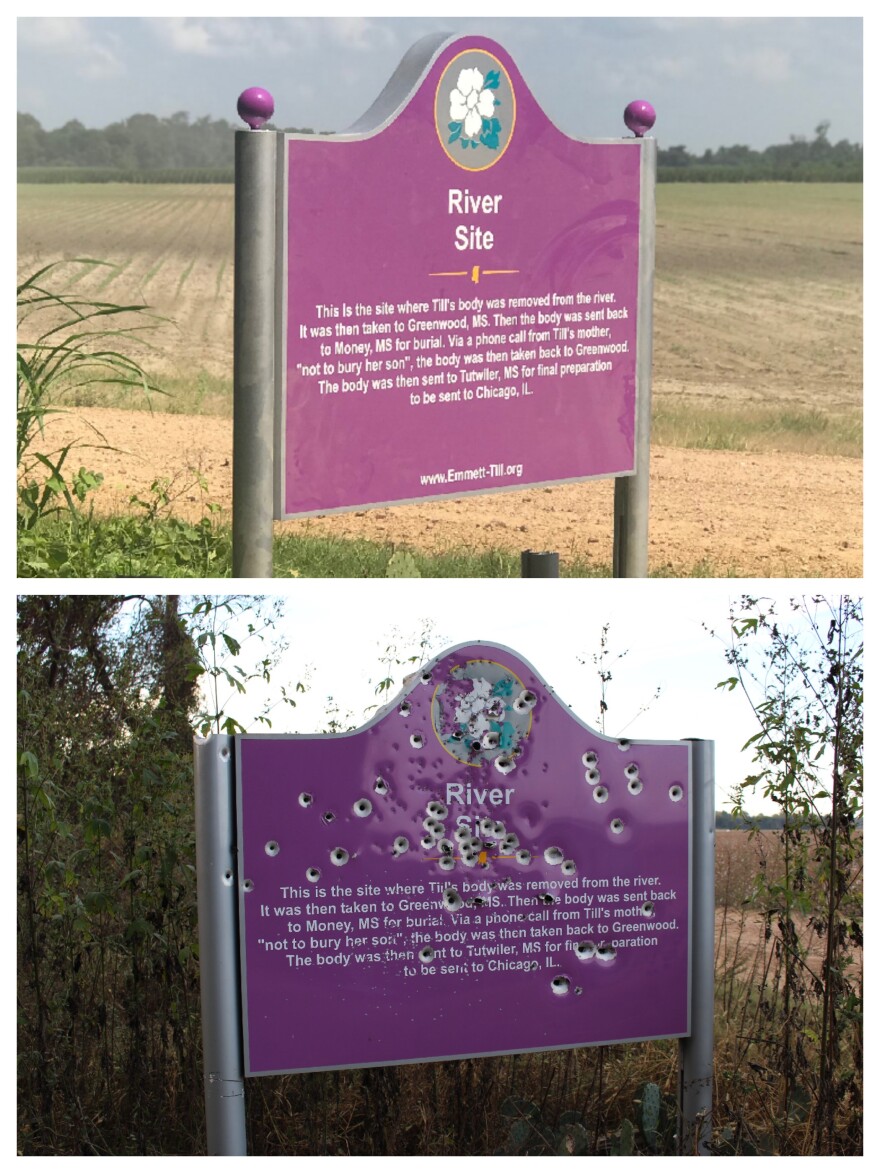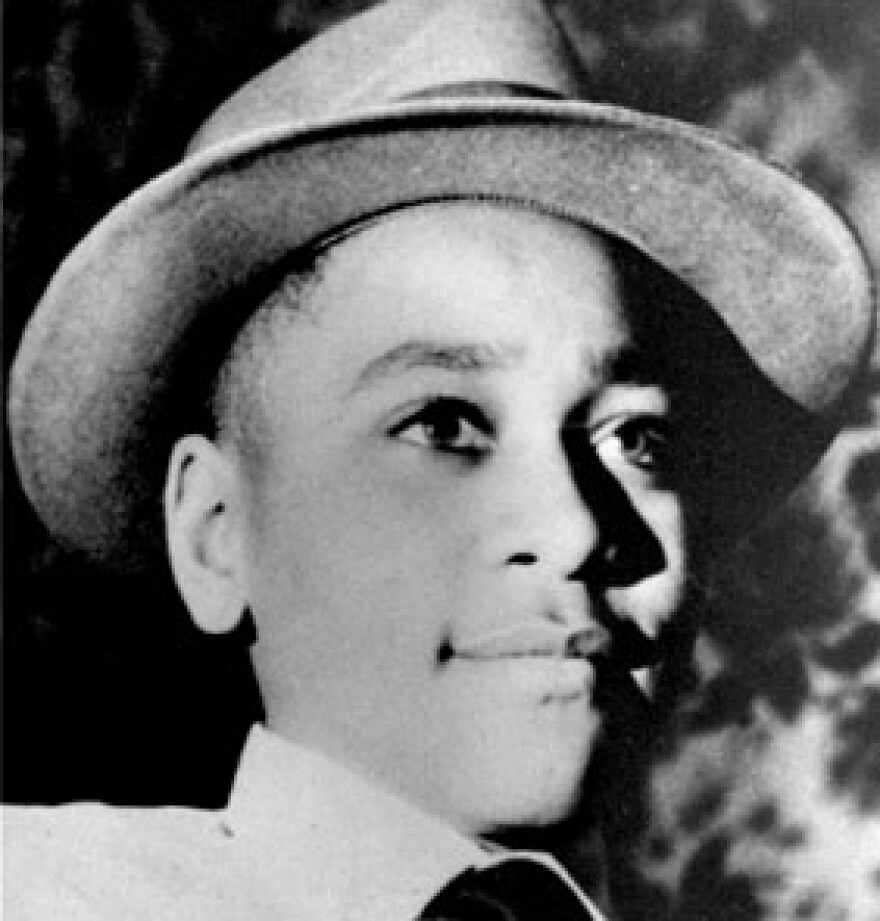In 1955, Emmett Till — a black Chicago teenager visiting his relatives in Mississippi — was brutally murdered after reportedly whistling at a white woman. The 14-year-old was abducted, beaten, shot and dumped into the Tallahatchie River with a 75-pound cotton-gin fan tied with barbed wire around his neck.
University of Kansas professor Dave Tell wrote an article contradicting a 50-year-old version of the crime that had been spelled out in Look magazine. This eventually led him to start the Emmett Till Memory Project. Tell recently spoke with KMUW's Carla Eckels about the project and the 63-year-old murder case that helped spark the civil rights movement.
Interview Highlights
Dave Tell: For 49 years and 11 months there was not a single sign or plaque or marker or museum anywhere in the state of Mississippi to commemorate the murder of Emmett Till.
But finally — starting in early 2006 — the Emmett Till Memorial Commission was trying to do the hard work of commemorating the murder.

[In] 2008, they just put up the first signs and now my article is beginning to circulate...and then vandalism happens. Their first sign is not in the ground for more than six months before it's pulled out of the ground and thrown into the Tallahatchie River — reminding the local black community of what happened to Emmett Till's body. A second sign was spray painted with the letters KKK. A third sign was found attached to a pick-up truck ready to pull it out of the courthouse square. Another sign was filled with bullet holes.
And so what happened is the Emmett Till Memorial Commission was wondering what to do about the vandalism, so they called a conference. They invited me down there and a couple of other academics. They also invited the FBI agent in charge of the case from 2004 to 2006 and they invited members of the Till family.
In that summer of 2014, this little conference of people spent three days traveling to the various Emmett Till sites and talking about how we could best remember the story.
That's when the Emmett Till Memory Project was born.
Our idea was to build a small little basic smartphone app. Using GPS technology, we take visitors to five sites related to the murder and the memory of Emmett Till.
Carla Eckels: In thinking about the murder itself, I've got to ask you, there was one point when Emmett Till was taken away — when he was abducted — that there were some other people in the truck. Because the question's been asked, how come he didn't just jump out of the truck?
Tell: Here's the answer: When Emmett Till was kidnapped, he was put in the back of J. W. Milam's 1955 Chevrolet pickup truck. Many people, including his own mother, have wondered, why didn't Emmett Till run? There's one way that question has been answered for nearly 50 years and it's dead wrong. Here's the wrong answer. People say, "Well, Emmett Till wasn't scared."

Of course he was scared. He was a 14-year-old boy from Chicago kidnapped in the middle of the night in the Mississippi Delta and beaten and tortured to the extent that parts of his body were falling off. He was terrified. So the question is, why do people still say that Emmett Till was not scared? Why to this day is there a museum in the heart of the Mississippi Delta called the Emmett Till Intrepid Center? The intrepid — a supposed testimony to the fact that Emmett Till was not scared.
The real reason Emmett Till didn't get out of that truck and run was, not because he wasn't scared, [it was] because he was guarded by two men, Levi Collins and Henry Lee Loggins, but those two men were jailed in a separate county to keep them from testifying during the trial.
And so because they hadn't been tried, they still face legal jeopardy. They would not sign release forms and so they could not be included in the story [journalist] William Bradford Huie told.
For that reason, Huie had to invent another reason to keep Emmett Till on the truck, so he invented the myth of a "not scared" Emmett Till. That myth has been so influential that it showed up on the 1987 celebrated "Eyes On The Prize" [documentary] series.
It's so important to remember that that bravery was invented by a white journalist to protect two accomplices from the murder who refused to sign a release form and so could not be included in the story of what happened to Emmett Till.
You said that the Till murder continues to haunt us. How so?
The Till murder does continue to haunt us, and I've been thinking a lot about what makes the murder of Emmett Till so resonant in today's society. It's far more resonant now. It's talked about way more in the media now than it ever was in the 1970s, 80s or 90s. Part of it is Black Lives Matter, but I think part of it is also a shift in the racial fault lines in our country. In the 1950s and 60s, during the heart of the civil rights movement, the battle for equality was a legal battle for equality. That battle, in some ways, is over, legally speaking, but the racial fault lines in our country are now cultural fault lines.
Just earlier this week a group of students on the University of North Carolina's campus brought down a Confederate statue. That's a parallel movement to the vandalism of what's going on with the Emmett Till signs right now in the Mississippi Delta.
Both are examples of how our culture right now is focused on questions of memory on the cultural negotiation of race.

How has the Emmett Till Memory Project changed you?
The Emmett Till Memory Project has consumed my life for the last five years. I did not learn about civil rights and become an activist and then learn about Emmett Till — Emmett Till is my entry point into this.
My first baptism and learning about civil rights was being in Tallahatchie County, seeing how the memory commission used the historical stories of Till's murder to help pursue racial reconciliation in the present. What's changed me above all is I'm not any longer just a historian or an academic interested in figuring out what happened in 1955. My real passion, and this is the vision of the Emmett Till Memorial Commission and the Emmett Till Memory Project, my real passion is to use the facts of 1955 to transform our present.
Tell will be in Park City on Saturday to discuss his work on the Emmett Till Memory Project as part of the 2018 Park City Alive! Programs. The presentation is at the Park City Library on Saturday, Aug. 25, at 7 p.m. Tell is also the author of the book Remembering Emmett Till, which will be released next spring.
--
Carla Eckels is director of cultural diversity and the host of Soulsations. Follow her on Twitter @Eckels. To contact KMUW News or to send in a news tip, reach us at news@kmuw.org.






